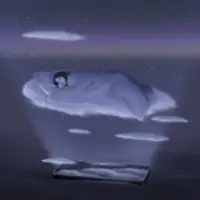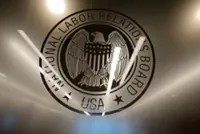
A sea lion with its camera mount resting on the shore. For a recent research effort, Angelakis and colleagues used sea lion assistants to carry underwater video cameras and dive to parts of the ocean floor off Australia’s southern coast that scientists had never seen before. — NATHAN ANGELAKIS/The New York Times
Around much of the planet, an aquatic mystery leaves scientists in the dark.
“For most of the ocean, we don’t know what the bottom looks like,” said Nathan Angelakis, a doctoral student at the South Australian Research and Development Institute (Aquatic Sciences) and the University of Adelaide.
So for a recent research effort, Angelakis and colleagues called in some helpers named Daphne, Phoebe, Iris and Pasithea. The four assistants, along with several others, carried underwater video cameras and dived to parts of the ocean floor off Australia’s southern coast that scientists had never seen before.
Their footage shows meadows of leafy seaweeds and craggy rocks covered in corals, and even includes the first recording of a mother Australian sea lion teaching her pup how to hunt.
Daphne, Phoebe, Iris and Pasithea had a unique advantage in capturing sea lion footage: They are sea lions themselves. Findings from their camera work were published Wednesday in the journal Frontiers in Marine Science.
Angelakis and colleagues hope their swims will help scientists develop a better understanding of how sea lions use these different habitat spaces, and how humans can manage these ecosystems to ensure that the places visited by Australian sea lions, which are endangered, are not further degraded.
Scientists usually map parts of the seabed by using remotely operated vehicles and cameras towed by underwater vessels. But using those tools can be challenging and expensive. So Angelakis and his colleagues decided to try another way to map the remote, aquatic ecosystems around Kangaroo Island and Olive Island in Australia: They attached video cameras to the area’s sea lions, which routinely dive 300 feet while hunting.
With approval from marine conservation authorities, Angelakis and his team approached Daphne, Phoebe, Iris, Pasithea and four other wild sea lions on land. (Only four of the eight study subjects had been given names by local tour guides.) They administered a light sedative. While the sea lions were groggy, the researchers glued patches of synthetic wet suit material a little larger than a credit card to the animals’ backs and heads, and then attached small cameras and devices to track both speed and location.
When the sea lions awoke, they made their way to the water. After a few days, they returned to their pups on the shore, and the researchers removed the devices. The synthetic patches remained, to be molted off as the sea lions naturally shed their fur.
Once the cameras had been retrieved, the researchers huddled around a laptop screen to review the footage.
“You get those moments which are really exciting,” Angelakis said, such as “when the sea lion captures a really big fish or a small shark or it’s wrangling an octopus.”
Angelakis said perhaps the most thrilling scene was captured by Daphne. “She was taking her pup out to sea, and that’s the first direct evidence that we’ve collected of Australian sea lion mothers teaching or passing on their foraging skills to their pups,” Angelakis said.
In addition to insights into sea lion behaviour, the videos provided the researchers with a rare perspective of the ocean floor. The scientists trained a machine learning model with the 89 hours of footage the sea lions gathered, along with GPS data and environmental information, including surface temperature and the amount of plant matter in the water. The model can predict the likely habitats lurking beneath the surface of unexplored parts of the surrounding ocean.
Dan Costa, a professor of ecology and evolutionary biology at the University of California, Santa Cruz, said that while he and other researchers had used cameras on sea lions and seals to learn about the ocean environment, “this was a new, really novel take on that, to use the animals to document the characteristics of the ocean floor.”
And for Costa, who was not involved with the study, a sea lion’s-eye view of the ocean could be the key to conservation.
“The more we learn about them, the better chance we’ll have to manage them and protect them,” he said. “It’s just a really cool, interesting animal, and so it deserves a place in the world.” – The New York Times











































